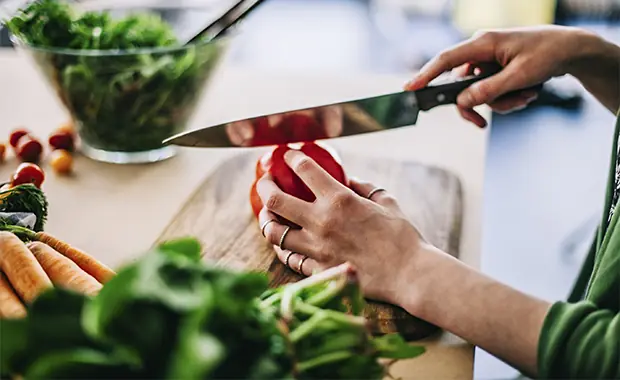
More often than not, athletes ask me, "What is a well-balanced diet? What should I be eating to help me perform at my best?" They feel overwhelmed by the seemingly endless list of nutrition don'ts. Don't eat white sugar, white bread, processed foods, fast foods, french fries, soda, salt, trans fats, butter, eggs, red meat... You've heard it all, I'm sure.
If you want to eat better but don't know where to start, here's a nutrition strategy that can help you fuel your body with a well-balanced sports diet. The suggestions guide you towards an eating style that's simple and practical, yet can effectively help you eat well to perform well, despite today's bewildering food environment.
Eat at Least Three Kinds of Nutrient-Dense Food at Each Meal
Don't eat just one food per meal, such as a bagel for breakfast. Add two more foods: peanut butter and low-fat milk. Don't choose just a salad for lunch. Add grilled chicken and a crusty whole grain roll. For dinner, enjoy pasta with tomato sauce and ground turkey. Two-thirds of the meal should be whole grains, vegetables and fruits, and one-third low-fat meats, dairy, beans or other protein-rich foods.
Too many athletes eat a repetitive menu with the same 10 to 15 foods each week. Repetitive eating keeps life simple, minimizes decisions, and simplifies shopping, but it can result in an inadequate diet and chronic fatigue. The more different foods you eat, the more different types of vitamins, minerals and other nutrients you consume. A good target is 35 different foods per week.
Eat "Closer to the Earth"
For instance, choose oranges rather than orange juice; orange juice rather than sports drink; whole-wheat bread rather than white bread; baked potatoes rather than french fries. Foods in their natural (or lightly processed) state offer more nutritional value and less sodium, trans fat and other health-eroding ingredients. You'll find these foods along the perimeter of the grocery store: fresh produce, lean meats, low-fat dairy, whole grain breads. If possible, choose locally grown foods that support your local farmer and require less fuel for transportation to the market.


